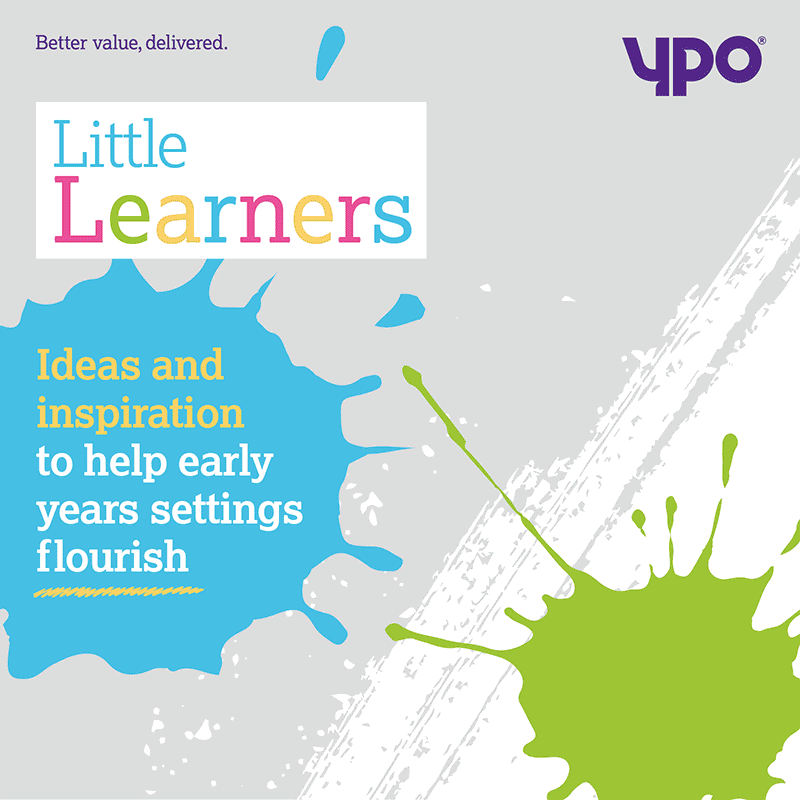Nicole Williamson, chief executive of Education Child Protection explores how to embed a safeguarding culture effectively in your nursery setting…
Nature’s classroom: importance of the outdoors for childhood development
Angela Andrea, founder and editor of Kadamey magazine and the Babyopathy pregnancy journal, says reimaging children’s outdoor space can improve their development and wellbeing
Mary, Mary quite contrary, how does your garden grow? With silver bells and cockleshells and pretty maids all in a row….”
This is an old nursery rhyme, but is it also a sign of how times have changed, not necessarily for our benefit?
How many of your children can name the flowers in your garden? Do you even have flowers in your garden or even a garden or outside space at all? Most early years settings do have access to a garden. but many have become muted brown playgrounds of artificial surfaces such as play bark and wooden equipment, instead of a natural play space, filled with the whole spectrum of colour provided by myriad plants and flowers.
At Kadamey we are on a mission to change this because being truly connected to nature is an inbuilt need for us all, that in today’s modern world is not being met. To fulfil this need, we have a challenge for you for 2024, to create a chromatic garden and now is the perfect time to start.
Sadly, current trends of artificial nature play indoors have created an environment (both indoors and outdoors) of a sea of brown, including beige walls, brown carpet and wooden furniture and play equipment everywhere.
While brown, like every colour, has many positive attributes, these can become negative influences when it’s the only overwhelming colour we are exposed to. For brown, these can include anxiety, dullness, insecurity and withdrawal. This makes the nature and sensory experiences children are exposed to even more important.
Why is the outdoors so important to us all, but especially children? Because our in-built connection with nature nurtures our wellbeing, health and development – this is called the biophilia hypothesis. Biophilia affects our wellbeing in many ways, for example, our minds are hard wired to react favourably to the colour green.
You may think playing with nature resources indoors, or a bit of time on some playground equipment is enough for our mental health and wellbeing, but it’s not. While a good start, children have become detached from nature itself, losing their instinct to explore and reimagine the natural world around them. This increases the risk of stress, anxiety and other mental health concerns. Due to Covid lockdowns their immune systems have suffered, as have their social and emotional development. Language delays and mental health concerns are at an all-time high and there’s an increasing lack of empathy toward others too.
Science has shown nature needs to be engaged outside for maximum effect, bringing ‘the outdoors in’ doesn’t interact with the brain in the same way.
Optimise sensory engagement
This is why the Kadamey programme encourages children to get outdoors wherever possible, with our indoor environments becoming aligned with sensory and nature influences, rather than creating nature activities inside. However, we take our outdoor environments one step further, through chromatic gardens.
Chromatic gardens combine the positive use of colour psychology alongside specific areas in the garden we call chromatic development zones. These colour-specific areas align with wellbeing and developmental areas and potential life paths, allowing children to explore their own unique characters without ‘boxing’ them in. We teach children to value nature and their environment, to engage with its natural rhythms and seasons too, all vital to energy and sensory wellbeing. Using our chromatic gardening programme and development techniques, alongside your traditional outdoor play equipment, will get kids growing, not just physically but mentally, emotionally and through all areas of their wellbeing and development.
In addition to our chromatic gardening zones, we include a complete annual garden programme of garden planning, ‘how to videos’ (everything from making pots from paper to planting, harvesting, cooking and storing the vegetables the children grow) and more. We get children ‘growing’ their own food every week too.
We can help you create your own chromatic garden, from planning and design this month, to planting the first seeds, creating your colour zones to glow throughout summer, finishing with harvesting your own foods and preparing for winter.
Through utilising everything you learn with us; your garden will become a whole new source of nature play and natural wellbeing for children and staff., helping to reduce stress while nurturing natural development and lifelong learning at the same time, So let’s get started.
Step one
Begin by drawing a plan of your garden space; measure, draw and take photos of it. The children can get involved in all of these. Keeping records of your garden allows the children to see their decisions and choices develop and you get to see what works (or not) in each area, plus it contributes to your Ofsted evidence and reinforces your planning and outcomes. You can find more help on planning in our book Chromatic Gardening.
Step two
Use a compass to mark north, south, east and west on your plan, making sure you have aligned your plan correctly. It is a great opportunity to introduce some basic language for directions, such as “the sun rises in the east and sets in the west”.
Step three
Mark on your plan everything already in your garden: each tree, bush or plant. Remember to include every piece of equipment, containers and sheds etc.
Step four
Once you have everything on your plan, it’s time to use our garden aspects plan. You can find it in our ‘January activity download’ on our website. Plot each colour zone onto your own garden plan. Remember, the garden aspects plan has north, south, east and west on it and it’s important to align it with your own garden correctly. How does the colour zone correspond to things already in your garden? If needed, you move things around to match.
Step five
Finally, sign up for some free plant catalogues and have fun choosing some flowers and plants to add to each colour zone over the coming months.
Latest Features
Simon John, a partner at real estate advisory business Gerald Eve, offers advice about dealingwith building disrepair and commonplace defects…
In the landscape of early childhood development, the issue of mental health has become increasingly important. Sarah Crossley, owner of…





